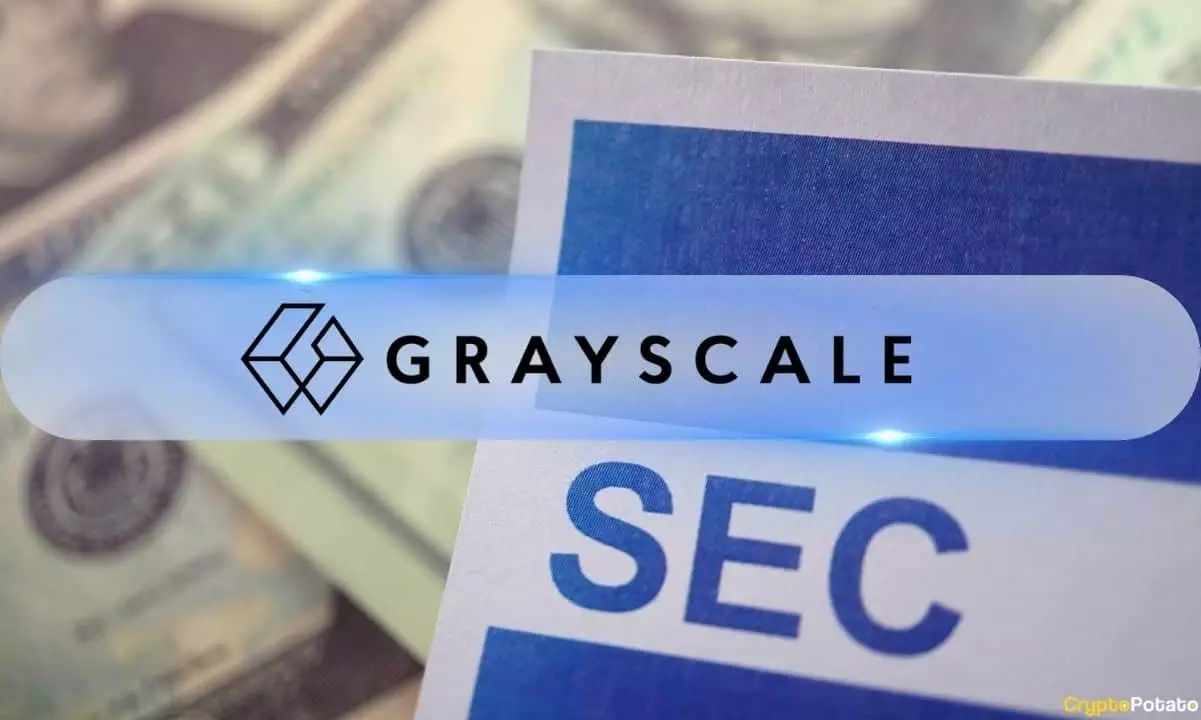The cryptocurrency investment landscape is undergoing a significant transformation as firms vie to establish exchange-traded funds (ETFs) that cater to varying digital assets. Recently, Grayscale Investments made headlines by filing a request with the U.S. Securities and Exchange Commission (SEC), intending to convert its mixed-crypto fund into an ETF. This pivotal move signals broader market trends fueled by growing institutional interest in cryptocurrencies and regulatory evolution—factors that are shaping the structure of digital asset investments.
Grayscale’s Digital Large Cap Fund (GDLC), which currently holds assets worth $524 million, is at the forefront of this initiative. The portfolio is heavily weighted toward Bitcoin (BTC) and Ethereum (ETH), accounting for 75% and 19% of the fund, respectively. The diversification into other cryptocurrencies like Solana (SOL), Avalanche (AVAX), and XRP showcases Grayscale’s strategy to capture market movements; however, it is primarily Bitcoin and Ethereum that drive investor attention. Should the SEC approve Grayscale’s ETF application, it plans to launch the fund on the New York Stock Exchange (NYSE), an event that could redefine how digital assets are traded in mainstream markets.
Grayscale’s ambitions follow a successful year where the company converted its Bitcoin and Ethereum products into ETFs, illustrating a possible shift in regulatory relationships with the SEC. The recent momentum suggests that regulatory bodies may be more open to innovative financial products within the cryptocurrency space. Additionally, Grayscale has proactively established a dedicated XRP trust, indicating its overarching strategy to ensure that various cryptocurrencies maintain pathways to ETF status. This is particularly significant considering ongoing legal confrontations involving Ripple, which have cast uncertainty over XRP’s standing and regulatory clarity.
The pursuit of ETFs isn’t limited to Grayscale. Competitors like Bitwise and Canary Capital are also in the race to register their spot XRP ETFs with the SEC, emphasizing the increasing competitive nature of this investment avenue. Furthermore, Canary Capital is eyeing a separate niche by planning to launch a Litecoin ETF, with the intention of providing a structured approach to investing in one of the oldest cryptocurrencies. With Litecoin’s market cap at around $5.3 billion, the firm posits that it presents both stability and growth potential.
Canary Capital’s optimism regarding the SEC’s receptiveness towards these new ETFs points towards a potential paradigm shift in the regulatory environment for digital assets. The firm’s description of Litecoin as a long-standing and reliable digital asset highlights the perceived value of enduring cryptocurrencies in the investment landscape. As conversations around cryptocurrency regulation evolve, the introduction of various ETFs could serve to legitimize these digital assets further, making them more accessible to institutional and retail investors alike.
The drive towards ETF creation among firms like Grayscale and others presents both opportunities and challenges in the cryptocurrency market. The regulatory landscape remains a critical factor that could either hinder or facilitate the growth of these products, and stakeholders are keenly observing as these developments unfold.


Leave a Reply